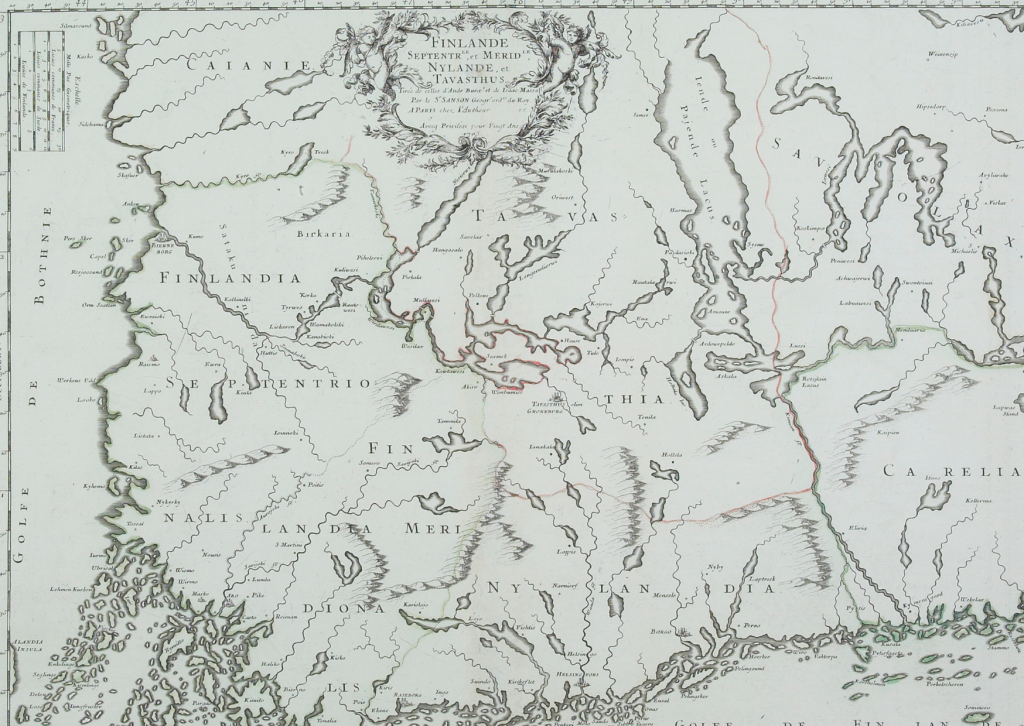The “Greater Wrath” (Isoviha) refers to the period of Russian occupation in Finland from 1713 to 1721 during the Great Northern War. Following Russia’s victory over Sweden, Russian forces invaded and occupied Finnish territories, leading to years of hardship and suffering for Finnish civilians. This occupation was marked by widespread violence, displacement, and economic devastation. Yet, it was also a time of resilience and resistance, as Finnish communities and guerrilla fighters took bold steps to defend their homeland. For those studying for the Finnish citizenship test, understanding the Greater Wrath provides insight into the strength of the Finnish spirit and the challenges the country faced during a time of intense foreign oppression.
Background to the Greater Wrath
The Greater Wrath began when Russian forces advanced into Finland in 1713, following the Swedish defeat at the Battle of Poltava in 1709. With Sweden’s military power weakened, Russian troops invaded Finnish territory as part of their broader campaign to gain control over areas around the Baltic Sea. This occupation continued until the end of the Great Northern War and the signing of the Treaty of Nystad in 1721.
For Finland, the Greater Wrath was one of the darkest periods in its history, marked by an extended occupation that left scars on Finnish society for generations. The effects of the occupation were felt in all aspects of Finnish life, from the economic and social structures to the emotional and cultural well-being of its people.
Life Under Russian Occupation
During the Greater Wrath, Russian forces occupied towns and villages across Finland, causing severe disruptions to daily life. Russian troops seized property, imposed heavy taxes, and subjected local populations to forced labor. The occupation was characterized by widespread brutality, as civilians were often the victims of violence and exploitation.
- Destruction of Villages and Towns: Russian soldiers destroyed homes, farms, and public buildings, leaving many Finnish communities in ruins. Major towns, including Helsinki, Turku, and Viipuri, were devastated, leading to significant displacement and economic hardship. The destruction of infrastructure and farmland made it difficult for the local population to sustain itself, increasing dependence on limited resources.
- Forced Labor and Heavy Taxation: Russian authorities imposed harsh labor demands on Finnish men, forcing them to work on military projects, fortifications, and other tasks that supported the Russian occupation. In addition to labor, high taxes were levied on Finnish households, draining the limited resources of families already struggling to survive. These demands intensified the hardships faced by the Finnish population.
- Famine and Disease: The occupation, combined with destroyed farmland and resources, led to widespread famine. Displaced communities and lack of access to food created conditions for disease to spread, resulting in high mortality rates. The suffering experienced by Finnish civilians left lasting emotional and physical scars on those who survived.
Acts of Resistance: The Role of Finnish Guerrilla Fighters
Despite being outnumbered and lacking organized military support, Finnish civilians and local militias engaged in acts of resistance against Russian forces. Finnish guerrilla fighters, known as sissit, employed unconventional tactics to resist occupation, relying on their knowledge of the land to launch surprise attacks and disrupt Russian operations.
- Guerrilla Warfare: The sissit used guerrilla tactics, including ambushes and surprise attacks, to disrupt Russian forces and supplies. They often targeted Russian supply lines, small military groups, and occupied positions, creating a challenging environment for Russian troops in remote areas. Finnish fighters used the forests and rugged terrain to their advantage, allowing them to evade Russian forces and strike effectively.
- Civilian Support and Community Resilience: Finnish communities supported resistance efforts by providing food, shelter, and resources to sissit fighters. Even as they faced hardships, civilians played a crucial role in keeping the resistance alive. These communities remained resilient, supporting each other and sharing resources in times of need, embodying a spirit of cooperation and solidarity.
- Symbol of Finnish Resilience: The guerrilla fighters became symbols of Finnish resistance, demonstrating the courage and resourcefulness of the Finnish people. Their determination to defend their land, despite overwhelming odds, left a lasting legacy in Finnish culture and memory. This resistance highlighted the strength of Finnish identity, even under foreign rule.
The End of the Greater Wrath and Its Lasting Impact
The Greater Wrath officially ended with the signing of the Treaty of Nystad in 1721, which concluded the Great Northern War and restored Finnish territories to Swedish control. Although the occupation had ended, the suffering endured by the Finnish population left deep scars on the nation.
- Economic and Social Devastation: Finland emerged from the occupation with a weakened economy and a devastated agricultural sector. Many towns and villages had been destroyed, and families were left impoverished. Rebuilding efforts required substantial resources, and it took years for Finnish communities to recover from the damage caused by the occupation.
- Loss of Population and Displacement: The violence, famine, and disease that accompanied the Greater Wrath led to a significant loss of population. Many Finns had fled to Sweden or taken refuge in the forests to escape the occupation. This displacement disrupted communities, weakened social structures, and delayed recovery efforts.
- Cultural and Psychological Impact: The trauma of the Greater Wrath influenced Finnish culture, leaving a legacy of resilience and a desire for self-determination. The stories of survival, resistance, and suffering became part of Finnish folklore and national memory, reminding future generations of the hardships endured and the strength needed to overcome adversity.
- Mistrust of Foreign Powers: The experience of Russian occupation during the Greater Wrath fostered a sense of mistrust toward foreign influence. This sentiment contributed to a strong desire for autonomy and self-governance, which became central to Finnish identity. The occupation’s impact on Finnish attitudes toward independence and national security continued to shape the nation’s future relations with neighboring powers.
Legacy of the Greater Wrath in Finnish National Identity
The Greater Wrath remains a significant chapter in Finnish history, remembered as a time of hardship and resilience. For the Finnish people, the occupation symbolized both the vulnerability of their land to foreign powers and the strength they could draw from unity and determination. The experiences of the Greater Wrath helped forge a sense of identity rooted in resilience, independence, and a commitment to protecting Finnish territory.
This period also reinforced the concept of sisu, a Finnish term that embodies perseverance and grit in the face of hardship. The stories of guerrilla fighters and the bravery of ordinary Finns during the Greater Wrath reflect the spirit of sisu, a quality that has come to define the Finnish character and approach to life’s challenges.
For those studying for the Finnish citizenship test, understanding the Greater Wrath offers valuable perspective on Finland’s historical struggles and the origins of its national values. The occupation and resistance during the Greater Wrath serve as reminders of the sacrifices made in the past, shaping the Finnish commitment to resilience, unity, and independence.


